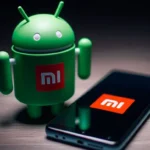- Xiaomi HyperOS 3.0 carries forward MIUI 17’s legacy with improved AI and performance enhancements.
- Despite the name change, Xiaomi retains MIUI’s internal numbering system for app compatibility.
- HyperOS 3 introduces deeper device connectivity and an optimized experience within Xiaomi’s ecosystem.

Xiaomi officially introduced HyperOS at the end of 2023, marking a shift from its well-known MIUI branding. This transition aimed to unify Xiaomi’s software ecosystem, integrating smartphones, IoT devices, and other products under a single operating system. While HyperOS represents a fresh identity, the internal development structure continues to follow the MIUI lineage, ensuring consistency across updates and app versions.
The rebranding, Xiaomi’s OS development remains linked to its past. HyperOS 3 is internally recognized as MIUI 17, reflecting the continuation of the company’s long-standing numbering convention. This approach helps in maintaining compatibility with system apps and ensuring a seamless transition for users familiar with MIUI.
HyperOS 3 and Xiaomi’s Numbering System
Xiaomi may have retired the MIUI branding publicly, but its internal development structure still follows the familiar versioning system. Here’s how the progression aligns:
- HyperOS 1 was internally MIUI 15, as seen in early test versions.
- HyperOS 2 followed as MIUI 16, reflected in Xiaomi’s in-house software updates.
- HyperOS 3, aligning with MIUI 17, continues this convention, ensuring continuity.
HyperOS 3 and MIUI 17 Connection
Xiaomi’s system applications provide significant clues regarding HyperOS 3’s MIUI 17 foundation. Each new OS version aligns with specific app updates, reinforcing the connection:
- System apps in HyperOS 1 started at version 15.
- HyperOS 2 saw app versions updated to 16.
- HyperOS 3 introduces system apps with version 17, confirming its MIUI heritage.
Additionally, Xiaomi’s internal firmware references MIUI 17, further validating that the core development approach remains unchanged. While the company promotes HyperOS as a next-generation OS, it still retains MIUI’s essential software framework.
Why Xiaomi Stuck with MIUI Numbering
Although Xiaomi has moved away from MIUI branding in public, its internal numbering system continues for several reasons:
- Software Update Consistency: Retaining the MIUI structure ensures smoother transitions across HyperOS versions.
- App Compatibility: System apps align with previous MIUI releases, preventing disruption.
- UI Development: Familiarity with MIUI makes adapting to HyperOS easier for long-time users.
Hyper OS 3.0 brings performance improvements, AI-driven optimizations, and expanded connectivity within Xiaomi’s ecosystem. However, at its core, it remains deeply tied to MIUI’s foundational elements.
HyperOS 3 signifies Xiaomi’s commitment to an integrated and optimized user experience while maintaining MIUI’s legacy. Though the MIUI branding is gone, its influence remains evident in Xiaomi’s development approach. With HyperOS 3 (MIUI 17) shaping the future of Xiaomi’s software, users can expect a refined experience backed by years of MIUI innovation.
FAQ
Is Hyper OS 3.0 different from MIUI 17?
Hyper OS 3.0 is Xiaomi’s rebranded OS, but internally, it follows MIUI 17’s structure.
Why does Xiaomi still use MIUI numbering in Hyper OS?
The MIUI versioning ensures app compatibility and a smooth software transition.
What new features does HyperOS 3 bring?
It includes better AI integration, enhanced connectivity, and performance improvements.
Will Hyper-OS 3 work with older Xiaomi devices?
Compatibility depends on Xiaomi’s update policy, but many devices will receive HyperOS 3.
Is Hyper OS 3 a completely new OS?
While it introduces new enhancements, it still retains MIUI’s software foundation.














